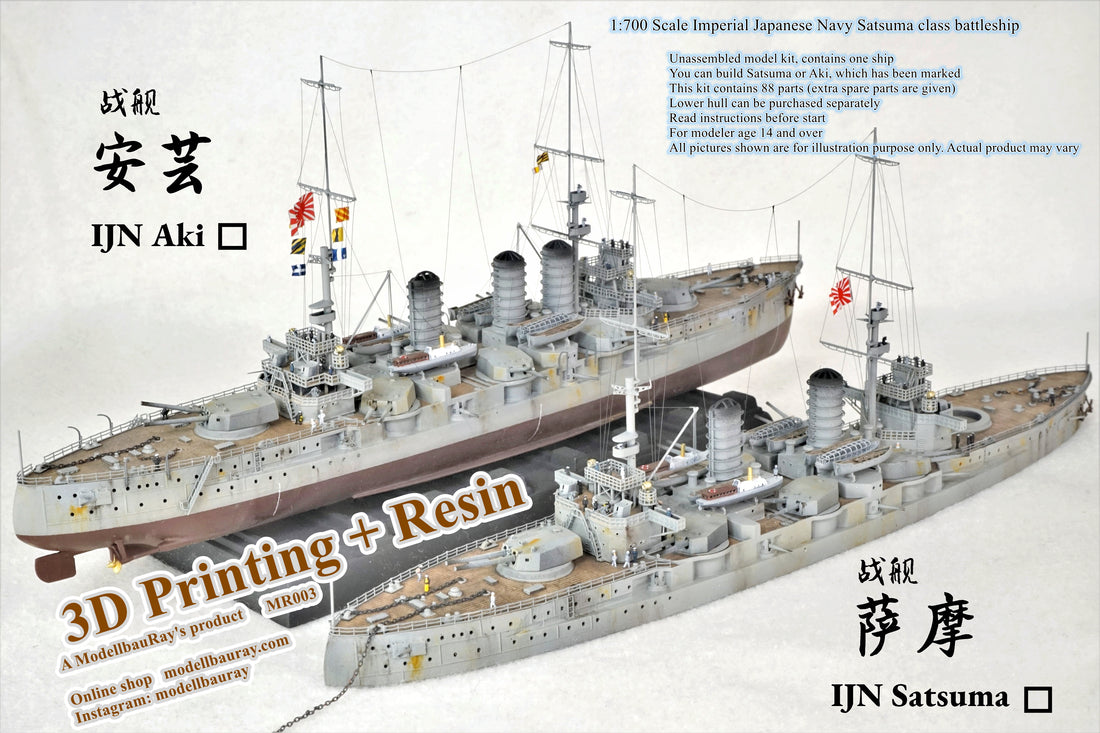About this ship
The Satsuma class (Satsuma, Aki) was a pair of semi-dreadnought battleships built for the Imperial Japanese Navy in the first decade of the 20th century.
They were originally intended to mount a dozen 12-inch (305 mm) gun in four twin and four single-gun turrets, but the combination of a shortage of Japanese-built 12-inch guns and their additional expense caused the ships to be redesigned to carry four 12-inch and twelve 10-inch (254 mm) guns, all in twin-gun turrets. The intended armament of these ships, laid down before HMS Dreadnought, would have made them the first "all big-gun" battleships in the world had they been completed to their original design.
IJN Satsuma, was laid down at Yokosuka Naval Arsenal on 15 May 1905. She was launched on 15 November 1906 with Emperor Meiji, the Navy Minister, and other high officials on hand for the ceremony, and completed on 25 March 1910. At the time of her launching, Satsuma had the largest displacement of any battleship in the world. Aki was laid down at Kure Naval Arsenal on 15 March 1906. She was launched on 15 April 1907.
They saw no combat during World War I, although Satsuma led a squadron that occupied several German colonies in the Pacific Ocean in 1914. Both ships were disarmed and expended as targets in 1922–1924 in accordance with the terms of the Washington Naval Treaty of 1922.
Both ships were disarmed at Yokosuka in 1922, stricken from the Navy List during 1923 and converted into target ships. Aki was sunk by the battlecruiser Kongō and the battleship Hyūga in Tokyo Bay on 2 September 1924; Satsuma was sunk by the battleships Nagato and Mutsu five days later in the same area
Important advice for builders:
3D-printed parts are often in green color they are fragile and brittle, like glass. Please be extra patient when removing the supports, sharp edges may appear after breaking any parts. Parts may fly away like bullet during cutting, please wear sufficient protective gear. 3D printed parts can be further hardened by placing under the sun, it will be harder yet more brittle.
3D-printed and resin parts can be easily glued by using superglue. Applying the color first, can make the parts be glued easier. UV glue is also a good choice to fill up the gaps.
This kit contains small parts, must be kept away from children, not ideal for kids under 14. Do not eat or taste any parts, for this can be dangerous. please wash your hand thoroughly after touching any parts.
Design and production: ModellbauRay (modellbauray)
Copy right reserved for: ModellbauRay (modellbauray)





